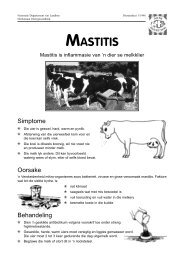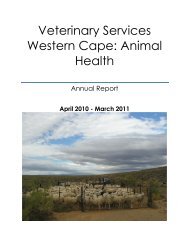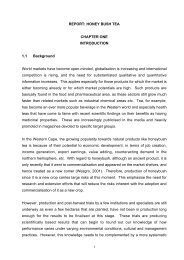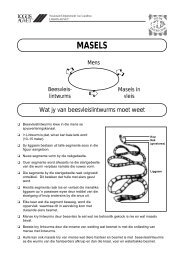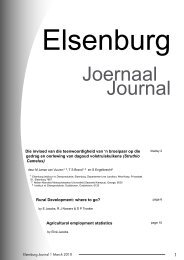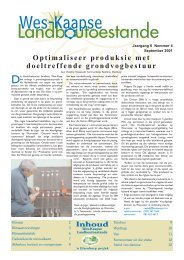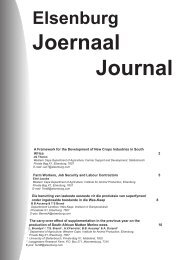The PROVIDE Project Standard Computable General Equilibrium ...
The PROVIDE Project Standard Computable General Equilibrium ...
The PROVIDE Project Standard Computable General Equilibrium ...
Create successful ePaper yourself
Turn your PDF publications into a flip-book with our unique Google optimized e-Paper software.
<strong>PROVIDE</strong> <strong>Project</strong> Technical Paper 2003: 3 October 2003<br />
then the model will need to adjust the savings rates to maintain equilibrium between the value<br />
of savings (TOTSAV) and the fixed value of investment. This can only be achieved by changes<br />
in the volumes of commodities demanded for investment (QINVD) or their prices (PQD). But<br />
the prices (PQD) depend on much more than investment, hence the main adjustment must<br />
take place through the volumes of commodities demanded, i.e., QINVD, and therefore the<br />
volume adjuster (IADJ) must be variable, as must the savings rate adjuster (SADJ).<br />
Alternatively the share of investment expenditure in the total value of domestic final<br />
demand can be fixed, i.e.,<br />
INVESTSH = INVESTSH<br />
(C2d)<br />
which means that the total value of investment is fixed by reference to the value of total final<br />
demand, but otherwise the adjustment mechanisms follow the same processes as for fixing<br />
INVEST equal to some level.<br />
4.3. Enterprise Account Closure<br />
Fixing the volumes of commodities demand by enterprises, i.e.,<br />
QENTDADJ = QENTDADJ<br />
(C3a)<br />
closes the enterprise account (C3). Note that this rule allows the value of commodity<br />
expenditures by the enterprise account to vary, which ceteris paribus means that the value of<br />
savings by enterprises (CAPENT) and thus total savings (TOTSAV) vary. If the value of this<br />
adjuster is changed, but left fixed, this imposes equiproportionate changes on the volumes of<br />
commodities demanded.<br />
If QENTDADJ is allowed to vary then another variable must be fixed; the most likely<br />
alternative is the value of consumption expenditures by enterprises (VENTD), i.e.,<br />
VENTD<br />
= VENTD . (C3b)<br />
This would impose adjustments through equiproportionate changes in the volumes of<br />
commodity demand, and would feed through so that enterprise savings (CAPENT) reflecting<br />
directly the changes in the income of enterprises (YE). Alternatively the share of enterprise<br />
expenditure in the total value of domestic final demand can be fixed, i.e.,<br />
VENTDSH = VENTDSH<br />
(C3c)<br />
which means that the total value of enterprise consumption expenditure is fixed by reference<br />
to the value of total final demand, but otherwise the adjustment mechanisms follow the same<br />
processes as for fixing VQENTD equal to some level.<br />
© S. McDonald<br />
43





